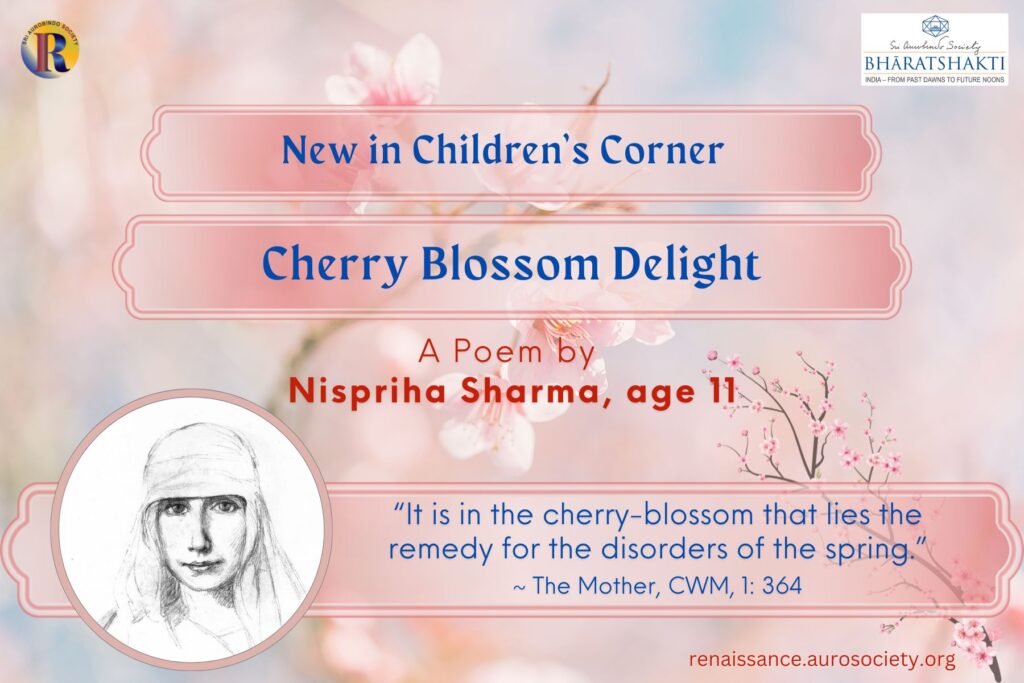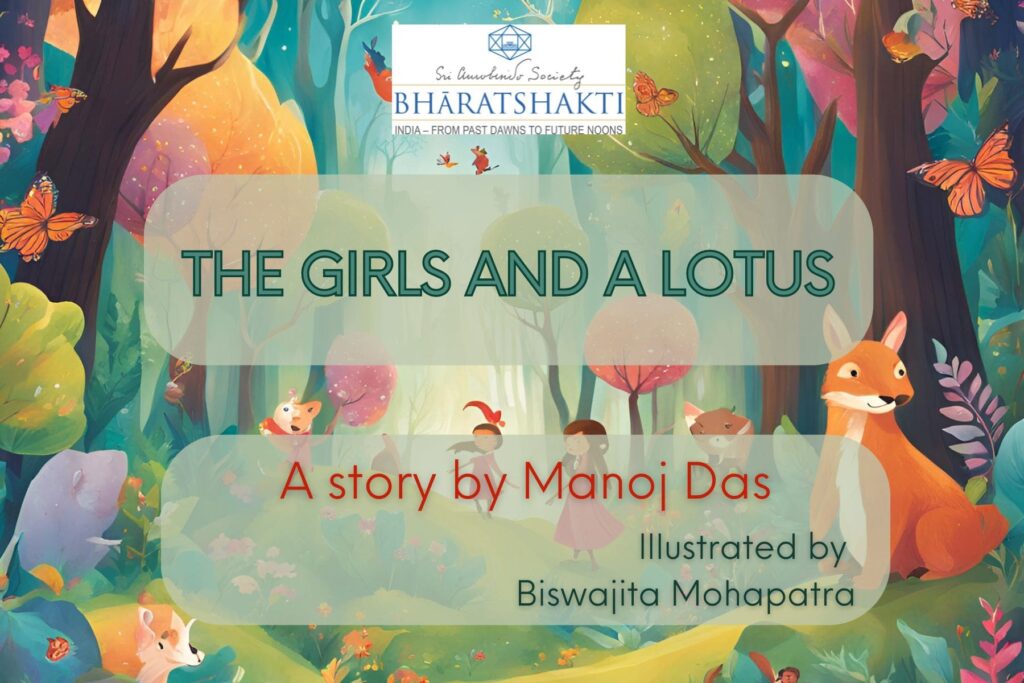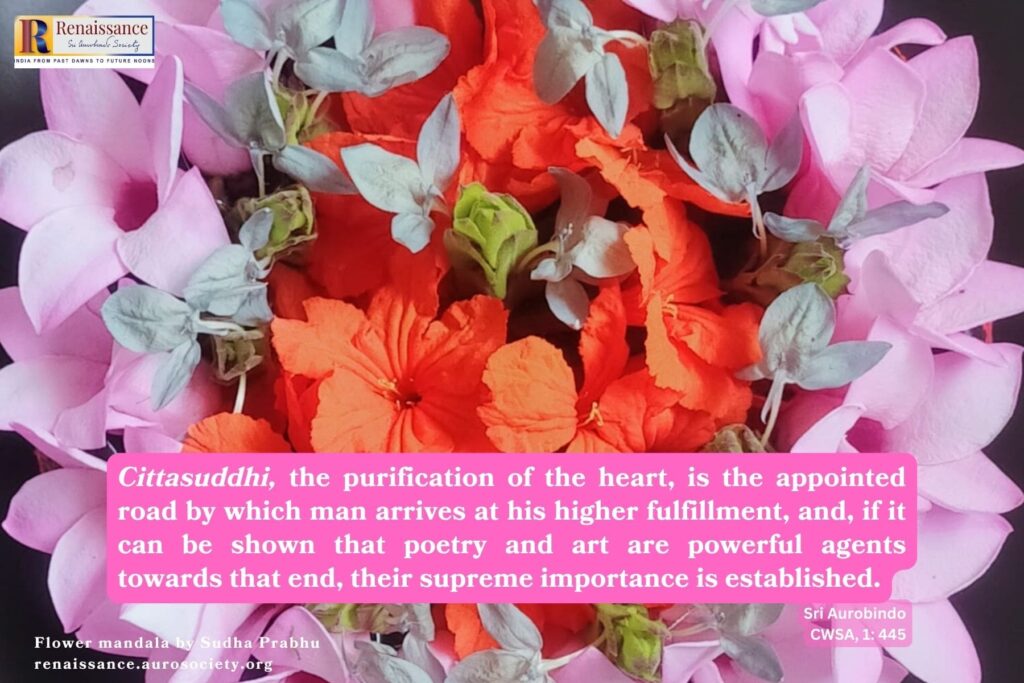Volume V, Issue 4
Author: Runalika Roy
Editor’s Note: The author recounts how flowers became the medium for the author to grow into a deeper relation with the Divine in her childhood.

In the tapestry of life, nature weaves a sublime masterpiece, captivating our senses and evoking a profound sense of awe. We often tend to escape from the daily hustles of life and seek shelter in the lap of Mother Nature. This is a natural tendency of the human mind to seek solace in lush greenery and blooming flowers.
Nature, in all its grandeur, has been a perennial source of wonder for humanity. From the towering mountains to the vast oceans, the intricate ecosystems to the smallest of organisms, every facet of nature exudes a divine essence that transcends the material realm. This profound interconnectedness of life forms the very fabric of our existence. And it is through nature that many seek a connection to the divine.
Among the myriad elements contributing to this divine symphony, flowers emerge as delicate yet powerful messengers of the sublime. Their ephemeral beauty and intricate designs have long inspired poets, artists, and philosophers. Flowers transcend their physical existence to embody deeper spiritual meanings.
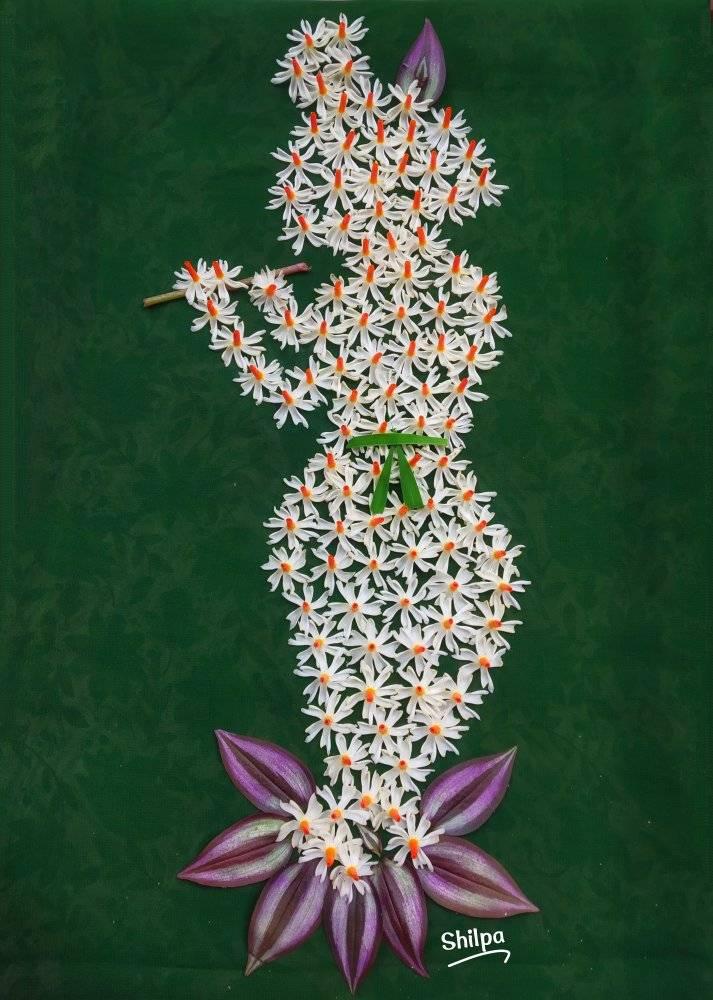
Flowers for My Lord – A Child’s Puja
During my school days, I lived in a township in Kolaghat. The layout of these kinds of townships, which resemble large buildings, made it difficult to connect with nature. Except when one was out on picnics. Running in the woods or sitting by the lake felt timeless, a world without obligations.
People living in the village surrounding our township used to supply vegetables, flowers and milk to us. At the age of about 7, I became interested in offering puja to the God, with full rituals. This was mostly because of the taste of Nakul dana and Batasa, two simple sweet treats that were served as prasad after the puja. There was a flower aunty (I used to call her ‘phool mashi’; phool means flower in Bengali) who used to supply a small quantity of flowers every day, along with milk. Those flowers were offered to the deities placed on the altar at home.
But the problem for me was the quantity of flowers that would arrive at home. I was never satisfied. And I used to feel sad that I was not able to decorate the altar and the deities the way I wished. Phool Mashi would frequently depart with the flower package still on the door handle. And so I was unable to tell her that I needed more flowers. Despite my attempts to convey my intense discontent, my mother would only ask me to manage with whatever flowers I received.
Now that I had no other option, I began to manage with what I had.
One day while decorating the altar, I turned to God in prayer. And I spoke frankly as a child would, “See, I wanted to offer you more flowers, kindly arrange more flowers so that I can decorate you nicely, and you will also look very pretty when I will decorate you”. The following day, to my complete amazement, the flower aunty brought me an abundance of flowers. I was so delighted that I took an early morning bath to offer the flowers to all the deities at my home altar.
As I recall this memory, even today it gives me immense assurance and faith in the Divine.
Later it all became a sort of a play, one which also taught me the value of being consistent with my prayers. Every time I skipped prayer, I would get less flowers. As a child, this experience made me intuitively recognize that flowers are meant to be offered to God. And that they are more than simply flowers. They are sent by God Himself so that they may be offered back to Him.
I used to feel envious of the flowers for always being at the Lord’s lotus feet. My childhood experiences with flowers helped me build a communion with the Divine. Because I directly experienced God’s response through them.
Unfortunately, during most of my childhood and youth – before I got married – I did not get the right environment to learn about or nurture these rituals or any other kind of spiritual practice. But this intimacy with the Divine, first established through the flowers, made me fall in love with the Divine. In His myriad names and forms.
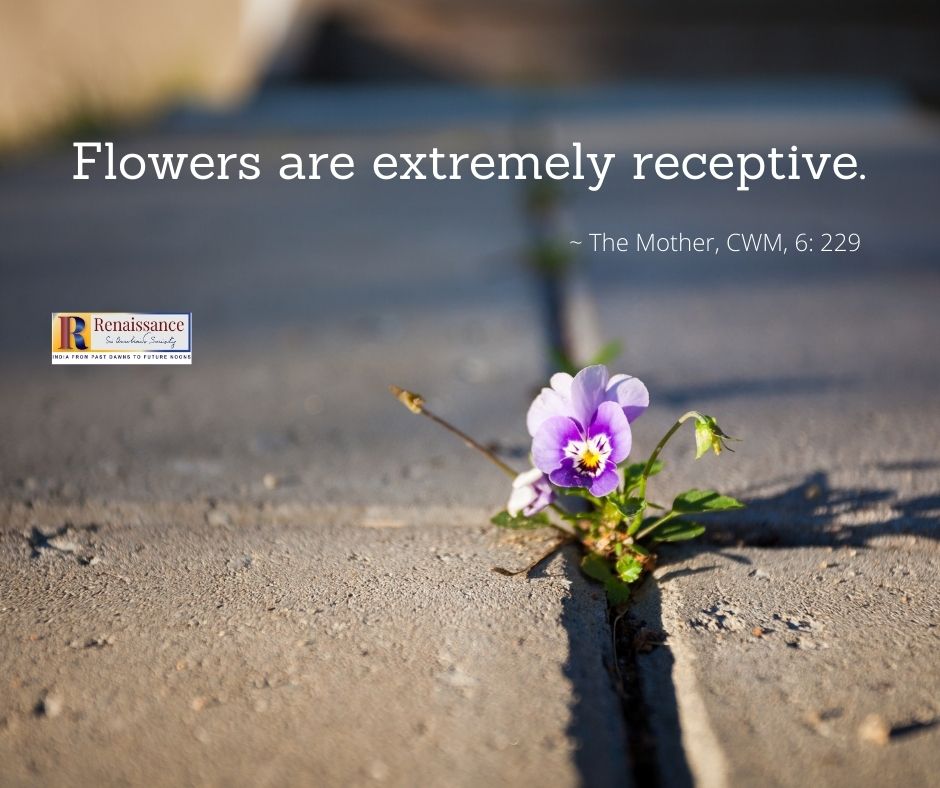
Intimacy with the Divine through Flowers
In this journey of life – outer and inner, we all face challenges and obstacles. As we grow up, our ego identification also becomes distorted, we lose the innocence of a child. However, the Divine always finds a way to guide us if our aspiration is strong and sincere.
When I look at flowers today, they evoke my childhood memories and fill my heart with immense gratitude and bliss. When I first read about the flower significances given by The Mother and the divine qualities associated with them, I felt it was the Divine Mother only who fulfilled my wish when I was a child. I was a devotee of the Mother Durga form of Divine Shakti during my early years.
With the Mother’s Grace, the journey continues. Like many, I find myself connecting with the Divine in some way or another every time I spend time with Mother Nature. Of course, Mother Nature is also an embodiment of the Supreme Mother. Silent contemplation of the wonders of nature, particularly flowers, facilitates for me the process of self-discovery and spiritual growth. Whether through mindful observation, paying attention to the language of flowers, or the practice of ancient arts like Ikebana, the essence of flowers beckons us to reconnect with the sacred rhythms of existence.
In the delicate petals and fragrant blossoms, we find not just ephemeral beauty but a profound reflection of the divine within and around us. The journey of exploring divinity in nature, through the lens of flowers, becomes a transformative odyssey. It is a reminder that in the intricate tapestry of life, every bloom is a sacred brushstroke, painting the canvas of existence with the colours of the divine.
***
… when one lives like this, quite open, like a flower blossoming in the sun before the Supreme Consciousness, the Supreme Wisdom, the Supreme Light, the Supreme Love, which knows all, which can do all, which takes charge of you and you have no more worries—that is the ideal condition.
~ The Mother, CWM, Vol. 3, pp. 256-257
~ Design: Beloo Mehra

